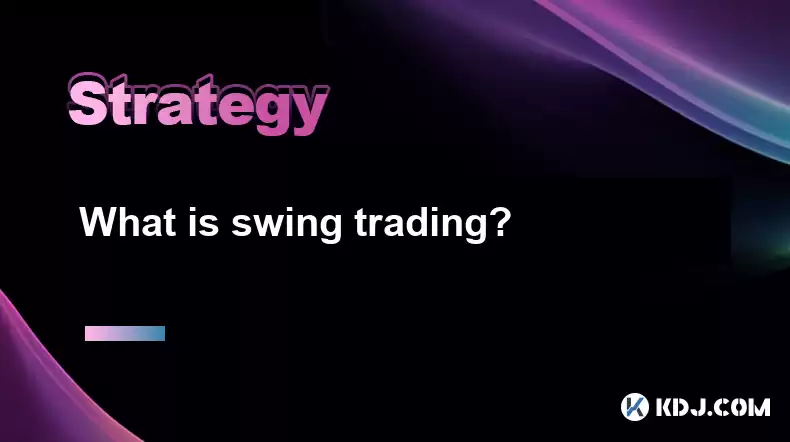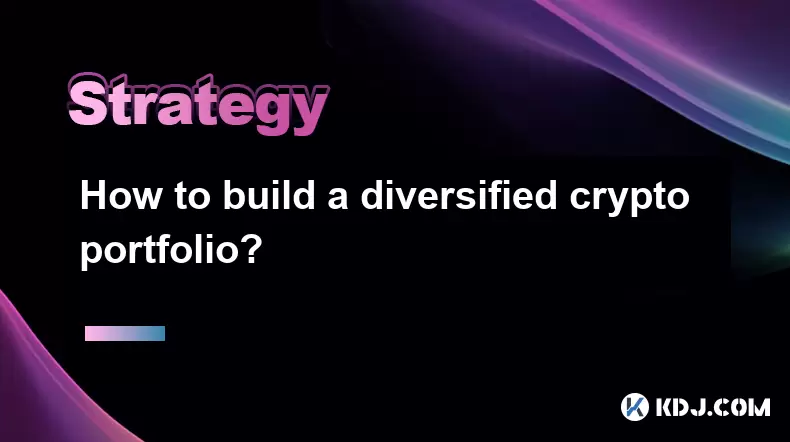-
 Bitcoin
Bitcoin $116400
-0.36% -
 Ethereum
Ethereum $4033
3.40% -
 XRP
XRP $3.302
-1.26% -
 Tether USDt
Tether USDt $1.000
-0.02% -
 BNB
BNB $796.1
1.67% -
 Solana
Solana $177.8
1.89% -
 USDC
USDC $0.9999
0.00% -
 Dogecoin
Dogecoin $0.2314
4.09% -
 TRON
TRON $0.3381
0.14% -
 Cardano
Cardano $0.7989
1.22% -
 Stellar
Stellar $0.4496
-1.84% -
 Chainlink
Chainlink $20.42
9.42% -
 Hyperliquid
Hyperliquid $41.17
0.88% -
 Sui
Sui $3.914
3.77% -
 Bitcoin Cash
Bitcoin Cash $584.7
1.52% -
 Hedera
Hedera $0.2632
-0.54% -
 Avalanche
Avalanche $24.09
3.40% -
 Ethena USDe
Ethena USDe $1.001
-0.02% -
 Litecoin
Litecoin $123.2
1.33% -
 Toncoin
Toncoin $3.318
-0.04% -
 UNUS SED LEO
UNUS SED LEO $8.984
-0.05% -
 Shiba Inu
Shiba Inu $0.00001323
2.85% -
 Uniswap
Uniswap $10.90
4.41% -
 Polkadot
Polkadot $3.999
3.34% -
 Dai
Dai $1.000
0.01% -
 Cronos
Cronos $0.1630
9.64% -
 Bitget Token
Bitget Token $4.484
0.82% -
 Monero
Monero $272.4
2.44% -
 Pepe
Pepe $0.00001173
6.03% -
 Aave
Aave $290.8
2.88%
What is swing trading?
Swing trading, unlike day trading, holds financial assets for days or weeks to capitalize on price fluctuations known as swings, emphasizing opportunities in trending markets with moderate volatility and liquidity.
Feb 20, 2025 at 10:00 pm

Key Points:
- Understanding the Concept of Swing Trading
- Identifying Favorable Market Conditions for Swing Trading
- Selecting Suitable Assets for Swing Trading
- Developing a Swing Trading Strategy
- Risk Management in Swing Trading
What is Swing Trading?
Swing trading is a speculative trading strategy that involves holding a financial asset for a period of days or weeks, with the aim of capturing price fluctuations known as swings. Unlike day trading, which focuses on profiting from short-term price movements within a single trading day, swing traders seek to capitalize on larger price fluctuations that occur over multiple days.
Swing trading is typically conducted by analyzing technical indicators, price patterns, and news events to identify potential trading opportunities. Swing traders may hold positions overnight or for several days, employing various trading strategies such as trend following, support and resistance levels, and breakout trading.
Identifying Favorable Market Conditions for Swing Trading
Successful swing trading hinges on recognizing favorable market conditions that offer potential for price swings. Ideal market conditions include:
- Trending Markets: Upward or downward trends provide clear direction and potential for extended price moves.
- Volatility: Moderate to high volatility presents opportunities for substantial price fluctuations.
- Liquidity: Markets with high liquidity ensure easy order execution and minimize slippage.
- Stable Market Environment: Periods of relative stability without significant market shocks or macroeconomic events create predictable trading conditions.
- Absence of Major News: News events can introduce unpredictability and increase market volatility, hindering swing trading strategies.
Selecting Suitable Assets for Swing Trading
Appropriate asset selection is crucial for successful swing trading. Considerations include:
- Liquidity: Choose assets that have high trading volumes and tight spreads to minimize transaction costs.
- Volatility: Select assets that exhibit moderate to high volatility, providing ample opportunities for price swings.
- Technical Analysis Support: Assets with clear technical indicators, such as trend lines and support/resistance levels, provide better opportunities for strategy development.
- Correlations: Diversify your portfolio by selecting assets with low correlations to reduce risk exposure.
- Trending Assets: Assets that are in uptrends or downtrends offer higher potential for extended price moves.
Developing a Swing Trading Strategy
A well-defined trading strategy is essential for profitable swing trading. Key elements to consider:
- Entry Criteria: Define specific conditions for entering a trade, based on technical analysis, price patterns, or news events.
- Exit Criteria: Establish clear exit points to maximize profits or minimize losses, using stop-loss orders, trailing stop-loss orders, or technical indicators.
- Position Sizing: Determine the appropriate number of trading units based on your risk tolerance and capital allocation.
- Technical Indicators: Utilize technical indicators such as moving averages, Bollinger Bands, and Relative Strength Index (RSI) to identify potential trading opportunities.
- Backtesting: Test your trading strategy on historical data to optimize parameters and assess its effectiveness.
Risk Management in Swing Trading
Managing risk is paramount in swing trading to protect capital and prevent catastrophic losses:
- Define Risk Tolerance: Establish a clear threshold for acceptable loss and adjust trading strategies accordingly.
- Use Stop-Loss Orders: Place stop-loss orders below (for long positions) or above (for short positions) your entry price to limit potential losses.
- Trailing Stop-Loss Orders: Adjust stop-loss orders as the price moves favorably to lock in profits.
- Position Sizing: Determine the appropriate size of trading positions based on your risk tolerance and account balance.
- Diversify Your Portfolio: Spread your capital across multiple assets to reduce the impact of individual price fluctuations.
FAQs:
Q: What is the difference between swing trading and day trading?
A: Swing trading focuses on capturing price swings that occur over multiple days or weeks, while day trading involves capturing short-term price fluctuations within a single trading day.
Q: What technical indicators are commonly used in swing trading?
A: Moving averages, Bollinger Bands, Relative Strength Index (RSI), and support/resistance levels are frequently used technical indicators for swing trading.
Q: How can I manage risk in swing trading?
A: Define your risk tolerance, use stop-loss orders, adjust trailing stop-loss orders, determine appropriate position sizes, and diversify your portfolio to mitigate risk.
Q: What assets are suitable for swing trading?
A: Assets with high liquidity, moderate to high volatility, clear technical indicators, and low correlations to other assets are favorable for swing trading.
Q: How long does it take to become a profitable swing trader?
A: Developing proficiency in swing trading requires consistent effort, education, practice, and experience. The time it takes to become profitable varies based on individual skills and market conditions.
Disclaimer:info@kdj.com
The information provided is not trading advice. kdj.com does not assume any responsibility for any investments made based on the information provided in this article. Cryptocurrencies are highly volatile and it is highly recommended that you invest with caution after thorough research!
If you believe that the content used on this website infringes your copyright, please contact us immediately (info@kdj.com) and we will delete it promptly.
- Shiba Inu (SHIB) in the Crypto Landscape: Community, Trends, and Future Outlook
- 2025-08-09 20:30:12
- Lasers in Modern Warfare: Iron Beam and the Future of Defense
- 2025-08-09 20:30:12
- Maxi Doge Presale: The Meme Coin That's Pumping Iron and Prices!
- 2025-08-09 19:10:11
- Rare Coin Warning: Don't Get Fooled by That 1p Coin!
- 2025-08-09 18:50:12
- Cardano, Unilabs, and Tron Price: Decoding the Latest Crypto Buzz
- 2025-08-09 18:30:12
- Aerodrome Finance: Price Targets and the Bullish Channel - What's Next?
- 2025-08-09 18:50:12
Related knowledge

How to use stop-loss orders to limit potential losses?
Aug 08,2025 at 02:01pm
Understanding Stop-Loss Orders in Cryptocurrency TradingA stop-loss order is a risk management tool used by traders to automatically sell a cryptocurr...

How to read cryptocurrency charts and use technical analysis?
Aug 08,2025 at 11:08am
Understanding the Basics of Cryptocurrency ChartsCryptocurrency charts are graphical representations of price movements over time. These charts are es...

How to do your own research (DYOR) before investing in a crypto project?
Aug 08,2025 at 09:07pm
Understanding the Core Principles of DYOR in CryptocurrencyEngaging in due diligence before investing in any cryptocurrency project is essential to mi...

How to build a diversified crypto portfolio?
Aug 09,2025 at 12:21pm
Understanding the Importance of Diversification in CryptoDiversification in the cryptocurrency space is a strategy used to reduce risk by spreading in...

How to avoid common crypto investment mistakes?
Jul 13,2025 at 01:35am
Understanding the Risks of Crypto InvestmentInvesting in cryptocurrency can be highly rewarding, but it also comes with significant risks. One of the ...

What is a long-short crypto strategy?
Jul 15,2025 at 10:56am
Understanding the Basics of a Long-Short Crypto StrategyA long-short crypto strategy is an investment approach where traders simultaneously take long ...

How to use stop-loss orders to limit potential losses?
Aug 08,2025 at 02:01pm
Understanding Stop-Loss Orders in Cryptocurrency TradingA stop-loss order is a risk management tool used by traders to automatically sell a cryptocurr...

How to read cryptocurrency charts and use technical analysis?
Aug 08,2025 at 11:08am
Understanding the Basics of Cryptocurrency ChartsCryptocurrency charts are graphical representations of price movements over time. These charts are es...

How to do your own research (DYOR) before investing in a crypto project?
Aug 08,2025 at 09:07pm
Understanding the Core Principles of DYOR in CryptocurrencyEngaging in due diligence before investing in any cryptocurrency project is essential to mi...

How to build a diversified crypto portfolio?
Aug 09,2025 at 12:21pm
Understanding the Importance of Diversification in CryptoDiversification in the cryptocurrency space is a strategy used to reduce risk by spreading in...

How to avoid common crypto investment mistakes?
Jul 13,2025 at 01:35am
Understanding the Risks of Crypto InvestmentInvesting in cryptocurrency can be highly rewarding, but it also comes with significant risks. One of the ...

What is a long-short crypto strategy?
Jul 15,2025 at 10:56am
Understanding the Basics of a Long-Short Crypto StrategyA long-short crypto strategy is an investment approach where traders simultaneously take long ...
See all articles

























































































